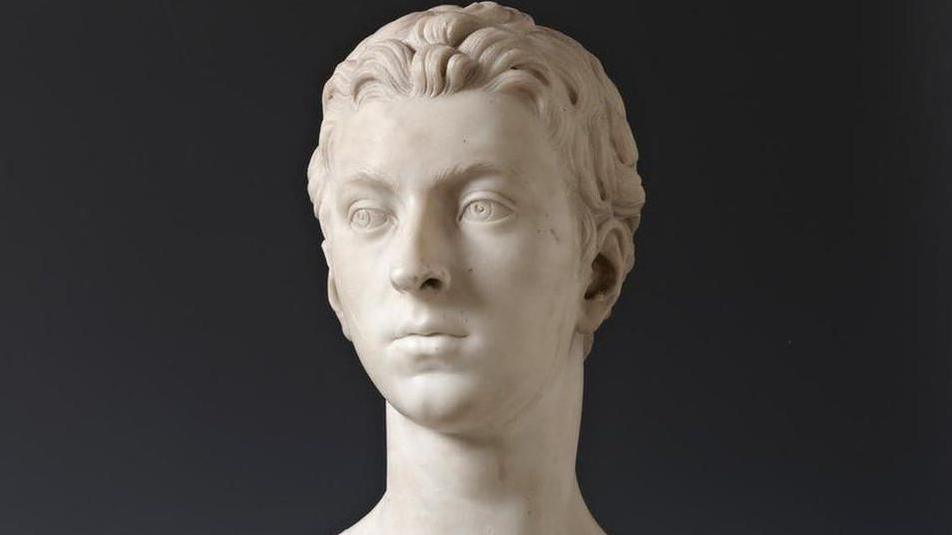Export licence sought for council's '£2.5m' artwork

The bust is of Highland landowner Sir John Gordon
- Published
An export licence has been sought for an artwork that could raise £2.5m for a Highland community fund.
The marble bust of landowner Sir John Gordon was made by French artist Edmé Bouchardon in 1728.
Invergordon Town Council bought the sculpture for £5 in 1930, but it was later placed in storage at an industrial estate and its value was not widely appreciated until recent years.
Highland Council, which hopes to sell it to raise funds for Invergordon, said the licence formed part of the sale process.
A heads up on the £2.5m Invergordon bust saga
- Published27 June 2024
What do you do with a £5 statue worth millions?
- Published30 October 2023
The local authority said the artwork had not yet been sold, adding that it was following export sales rules called the Waverley Criteria, external.
This is a set of measures used to determine whether an artwork is a national treasure and if any sale to an overseas buyer would be considered a "misfortune".
It is designed to give institutions, such as museums and galleries, a chance to purchase the art.
Highland councillors approved the sale of the bust last June following an approach from a private buyer, via auctioneers Sotheby's, with an offer of £2.5m.
The son of a banker, Sir John Gordon's family owned large areas of land in Sutherland and Ross-shire and established the town of Invergordon on the Cromarty Firth.
Gordon was a young man travelling through continental Europe when he met Bouchardon in Rome in 1728 and the sculpture was made.
Gordon became an MP in 1742.
For years the bust was a feature of the Gordon family's Invergordon Castle, and survived a fire at the property in the 19th Century.
The local town council bought the artwork at an auction in Kindeace, near Invergordon, in 1930.
It is understood the bust was to be put on display in Invergordon Town Hall, before it was later moved to storage and almost forgotten.
Records relating to the piece are thought to have been disposed of during local government reorganisation in the 1970s and 90s, according Rob Gibson, speaking to BBC Scotland News in 2014 when he was a local MSP.
Maxine Smith, a Highland councillor, said she rediscovered the bust in 1998.
She said it was found propping open a door in a Highland Council unit on an industrial estate in Balintore, about 14 miles from Invergordon.
Highland Council describes the sculpture as a community asset belonging to Invergordon Common Good Fund.
In Scotland, common good funds go back to the 15th Century and involve land, investments and property that under law exist for the benefit of burgh residents.